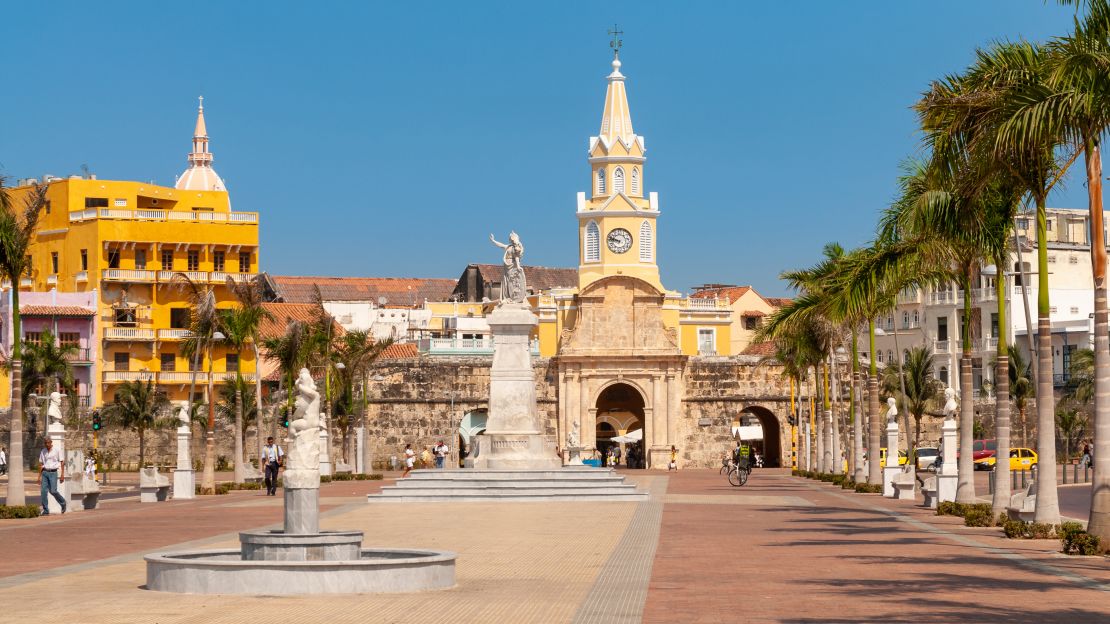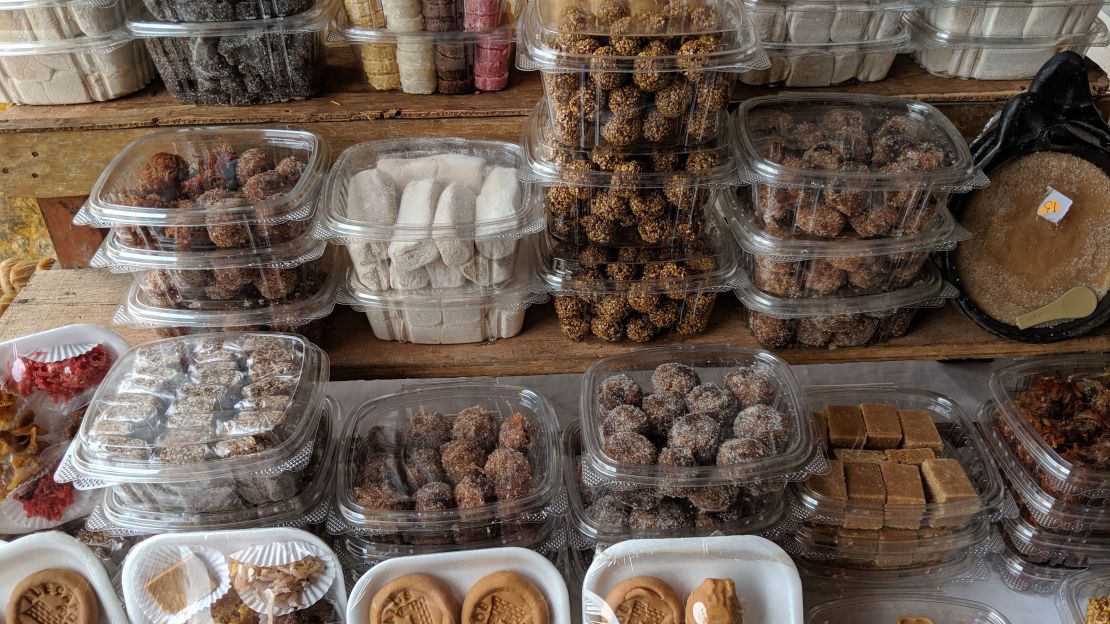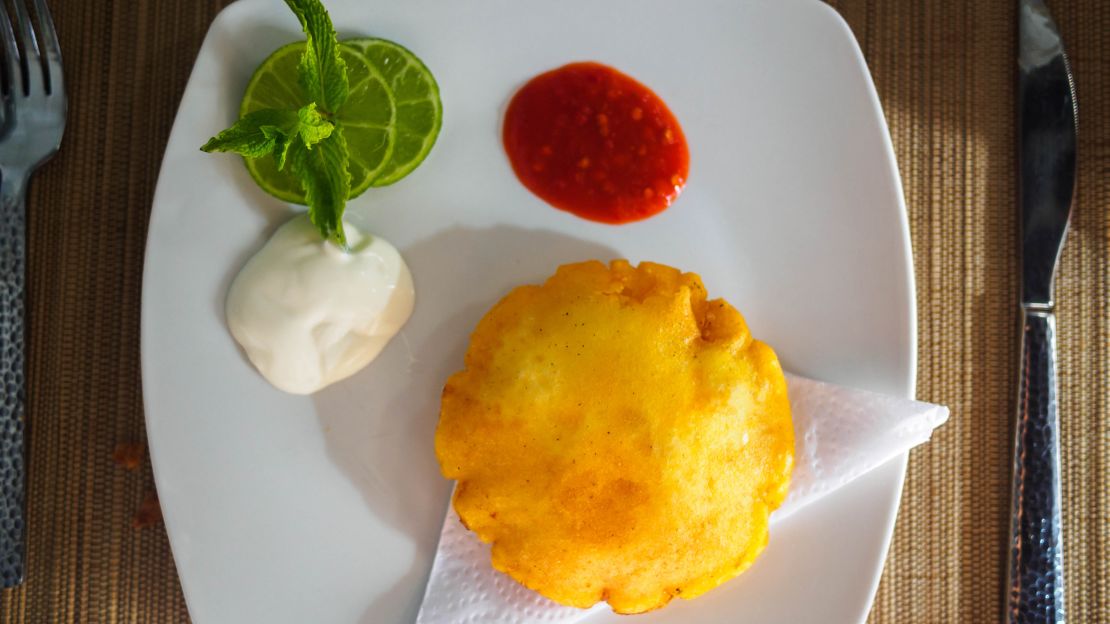Cartagena, perched on Colombia’s Caribbean coast, is quickly becoming a must-visit, especially for Americans and Canadians enjoying new, convenient flight routes.
Once primarily associated with gangs and drugs, the word is out that Colombia is now a massive tourist destination. Tourism has more than tripled from 1 million foreign visitors per year in 2006 to 3.1 million in 2018, according to data from the official national tourism board.
While Cartagena may not be the capital (that’s Bogota) or the title of a Madonna song (Medellin,hello), its mix of casual beachside charm and urban vitality make it a fun and fascinating place to explore. The city center and its fortifications are also a UNESCO World Heritage Site, so you’ll be able to soak up the history as well as the sun.
The basics
Cartagena, like so many places in Latin America, is named for a city in Spain. Therefore, Cartagena, Colombia is often called by its full name, “Cartagena de Indias,” or Cartagena of the Indies. Locals are known as Cartageneros (or Cartageneras in the feminine plural).
The historic center of Cartagena is within the old city walls built by the Spanish between the 16th and 18th centuries. It’s called the Ciudad Amurallada – Walled City – and it’s where the majority of hotels and restaurants are located, in addition to being extremely walkable.
If you only have a few days, you’re best off staying here. And if you’re planning a longer trip, spend the first few days in the walled city getting your bearings before venturing further afield.
The famous Clock Tower is often used to demarcate the boundary of the walled city, as it’s above the main Old City Gate. Once you are south of here, you find yourself in the colorful working-class neighborhood of Getsemaní.
Getsemaní is the place to go for street art, less expensive restaurants and vibrant community life.
The narrow spit of land southeast of the walled city is Boca Grande. That’s where you’ll find many of the upscale hotels and all-inclusive resorts.
Now that you’re settled, it’s time to eat, dance and drink.

The highlights
Many of Cartagena’s biggest attractions are quite close to each other.
You will notice fairly quickly – especially if you look at postcards of the city – that many of the most famous buildings in Cartagena are bright yellow. The Clock Tower is one of them.
In addition to being a great example of where to see the old city walls, the Clock Tower’s dramatic skyline presence makes it an easy tool to navigate by.

The narrow street across from the Tower is known as El Portal de los Dulces, or Sweets Street.
Here, vendors – primarily women, who tack up wooden signs bearing their names above their booths – set up carts selling local favorites like coconut and panela (similar to brown sugar) cookies, guava jellies and dulce de leche shaped like coins, hearts or babies.
Most of these come pre-wrapped, making them easy and fun souvenirs or gifts for loved ones back home, and you can usually try samples.
Art and architecture
Even if you’re not able to see a show, the beautiful pastel Teatro Adolfo Mejia is usually open to explore.
Built on the ruins of a church, this gorgeous building now serves as a temple to the arts – inside, look for a huge fresco of the nine muses, painted by Colombian artist Enrique Grau, on the ceiling.
Nearby, you can also see the former home of the man who is arguably Cartagena’s most famous son, the late Nobel Prize-winning author Gabriel Garcia Marquez.
Marquez’s iconic novel “Love in the Time of Cholera” is set in a lightly fictionalized Cartagena, and there’s a Marquez quote painted on the side of his onetime house.
As it’s still a private residence, though, you can’t go inside. The mural is on the side of the building on Calle 7, next to Hotel Makondo (whose name comes from the town where Marquez’s “One Hundred Years of Solitude” is set).
Many of Cartagena’s most beautiful buildings are churches. One of the most notable, with a dramatic stone front, is the church of San Pedro Claver.
Originally a church built by Spanish Jesuits in the 1600s, it was renamed for Pedro (Peter) Claver, who was canonized in 1888. Claver was known for providing medical care and food for enslaved Africans brought to Colombia.
He is now the patron saint of both Colombia and of enslaved people, and the church here has a museum dedicated to his life and works.
Around the corner from the church is Cartagena’s Modern Art Museum. This small but lovingly curated two-story museum focuses on work by Colombian and Latin American artists and has information in Spanish and English.
Teatro Adolfo Mejia, Calle De La Merced 3638 Carrera 10 Centro, Cartagena, +57 5 6646023
Casa Gabriel Marquez, Calle Zerrezuela, Cartagena
San Pedro Claver Church, Plaza de San Pedro Claver, Cra. 4 ## 30-01, Cartagena
Modern Art Museum of Cartagena, Cl. 31 #69, Cartagena, Cartagena, +57 5 6645815
Food and drink
Despite its small size, the walled city is packed with everything from street food people wait in line for half an hour to buy as well as sceney high-end restaurants.
Many local favorites, like arepas con huevo (egg, ground beef and cheese stuffed inside a corn arepa), are fried, which doesn’t always make them your first choice on a blazing hot day.
Another option: Colombia’s Peruvian influence combined with Cartagena’s proximity to the sea means there’s a lot of great ceviche.

While La Cevicheria deservedly gets a lot of press (including here at CNN Travel), it often has long waits and can get pricey. If you don’t want to queue, head to Cebiches & Seviches, which is through a blink-and-you’ll-miss-it door next to Portal de los Dulces.
There, you can’t go wrong with corvina (sea bass) prepared simply but beautifully with fresh avocado and toasted corn. The classic tleche de tigre with lime juice, fish stock and cilantro is also solid.
Colombia is also home to a wealth of tropical fruits, some of which are hard to find outside of the country.
One great place to sample them is small, adorable La Palettería, home of popsicles made with lulo (a citrus fruit), maracuyá (a tart breed of passionfruit) or corozo (a reddish berry similar to a cranberry, but sweeter). There are also more traditionally ice cream-y flavors like vanilla and chocolate if you feel like sticking to a more North American classic.
To take a break from walking, there’s no better place to spend an afternoon than in Abaco, a bookstore and coffee shop where paperbacks are stacked all the way up to the ceiling. There’s table service, a robust coffee menu (this is Colombia, after all) and free Wi-Fi, making it the perfect place to charge your phone and rest.
Cartagena is legendary for its nightlife. Head to El Baron, across the plaza from San Pedro Claver, for small plates and incredible rum-based cocktails, and request an outside seat to take in the action.
You can taste some of Colombia’s small but growing craft beer wares at The Beer Lovers – look out for brands like 3 Cordilleras, Bogotá Beer Company and Chelarte (who gives their brews women’s names like Raquel and Zenaida).
For the kitsch factor alone, it’s worth stopping into KGB Bar, which is filled with Soviet-era medals, cosmonaut uniforms and other memorabilia. If you ask nicely, they’ll let you wear a Russian military hat while you drink.
Cebiches & Seviches, Carrera 7 #32-25 Cartagena, +57 5 6797671
La Palettería, Calle 35 #03-86, Cartagena, +57 5 6661579
Abaco Libros Y Cafe, Calle 36 #3-86, Cartagena, +57 5 6786143
El Baron, Carrera 4 #31-7, Cartagena, +57 5 6643105
The Beer Lovers, Calle Gastelbondo y Calle Factoría, Cartagena, +57 5 6642202
KGB Bar, Carrera 7 #38-152, Cartagena
Getting to know Getsemaní
If the walled city is Cartagena for beginners, Getsemaní is the next step. It has a youthful, lively feeling without the English-speaking hawkers on every corner.
One option for getting introduced to the neighborhood is a food or street art tour from Cartagena Connections, which keeps group sizes small and is owned locally.
There’s no better place to dive into the neighborhood than Cafe del Mural, a coffee shop and cafe on a street lined with colorful murals, hence the name. Besides coffee (if you want to learn more, they’ll set up an informal tasting), there are plenty of fresh fruit juices, herbal teas and cakes.
It has Wi-Fi and is a good place to catch up on work emails, provided you only need to do so after 3 p.m. when they open. (Take this as an excuse to unplug.)
Two great lunch spots are Oh La La – a French restaurant that incorporates Caribbean flavors – and Cafe Lunatico, which rotates fresh fish and fruit juices based on availability. Oh La La also offers cooking classes in Spanish and English.
No matter where you’re staying, the best time to visit Getsemaní is at night, when the neighborhood lights up.
Pop in for dinner at the rooftop of Malagana, where the food – namely the city’s best fish tacos – is complemented by the views of the city and the cool breezes.
Demente, just off the Plaza de Trinidad in the heart of the neighborhood, has pizzas, small plates (don’t skip the albondigas) and killer cocktails, and on nice nights they’ll open up the retractable roof.
Plaza de Trinidad is home to nightly entertainment – whether it’s a community Zumba class or a performance by traditional Palenquero dancers – plus food carts and vendors selling water and canned beer out of styrofoam boxes. You’ll also see vendors selling blended juice, some of which are made in blenders operated by bike or solar power.
For just a few dollars, you can have a meal, grab a seat and enjoy the show that is Cartagena.
Cafe del Mural, Calle de San Juan #29100, Cartagena, +57 5 6472912
Oh La La, Calle 25 #8b300, Cartagena, +57 5 6644321
Caffe Lunatico, Calle Espíritu Santo #29-184, Cartagena, +57 5 6601735
Malagana, 31-55 Calle tripita y Media, Cartagena, +57 5 6601360
Demente, Carrera 10 #29-29, Cartagena +57 5 6604226
Colombian mud bath
Going beyond
While Cartagena city center has a lot of things, it’s majorly lacking in one department – the beach. Luckily, many nearby resorts will let you book day passes or excursions and, in some cases, will include meals and drinks to sweeten the deal.
Most also include use of beach chairs and umbrellas, but you may need to bring your own towels if you’re not staying on property.
One excellent option is the Conrad, conveniently located about halfway between the airport and the walled city. It’s also a nice choice to stay overnight if you have an early flight and want to beat the traffic or sleep in a little the next morning.
For about $45 US, you can hitch up at any of the resort’s pools, and a lunch or dinner at the excellent on-site library-themed restaurant Biblioteka is highly recommended.
Another option is the posh, clubby Blue Apple Beach House, located on Isla Tierra Bomba just off the southwestern side of Cartagena. To get there, you’ll need to take a cab to the main ferry terminal and board the resort’s private boat – transport to and from the island is included in the day rate of 90,000 pesos (about $30).
One of the city’s most famous historic attractions is the Castillo de San Felipe de Barajas, a castle and fortress built by the Spanish in the 16th and 17th centuries. Thanks in part to the UNESCO World Heritage designation for it and the old city walls, the Castillo is in excellent condition and has been well-maintained, especially the dramatic entrance overlooking the water.
A note, though, is that the neighborhood around the fort is not the safest, and many Cartageneros will not go there alone. Your best bet is to take a taxi to the the fort and pay the driver to wait and drive you back.
To get a truly Colombian experience, the Mercado Bazurto market – about 4 km (3 miles) outside Cartagena – is worth a visit.
It is colorful, chaotic, loud and exciting, just like the city itself. In an hour’s time you can buy a hand-woven blanket or basket, watch a dead fish get disemboweled and drink a beer with an old-timer while you listen to his stories about what the country used to be like.
The selection of fruit, produce, meat, cheese and chocolate is exceptional, but the market can be challenging to visit for anyone who isn’t proficient in Spanish. It’s also huge and hard to navigate, which can be fun or scary depending on the mood you’re in that day, and a known hotbed for pickpockets who take advantage of the packed crowds and narrow aisles.
The best way to experience the market is to tag along with a local. There are several Airbnb experiences that include local-led tours of the market and an accompanying home-cooked meal of whatever you bought that day. In addition to being a safer way to experience the market, it also gives you the chance to meet a local and learn about what life is like for most Cartageneros.
Conrad Cartagena, Anillo Vial, KM 12 Between Manzanillo del Mar and, Vía Punta Canoa, Cartagena, +57 5 6517220
Blue Apple Beach House, Playa Mamon #1, Bocachica, Isla Tierra Bomba, Cartagena, +57 316 7506979
Castillo de San Felipe Barajas, Carrera 17, Cartagena +57 5 6421293
Mercado Bazurto, Carrera 29 #36-07, Cartagena
When you use affiliate links on this page, CNN may receive revenue. CNN is not responsible for the goods or services provided through such links.
















